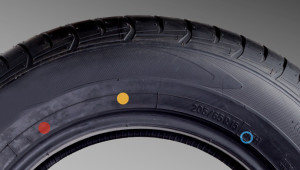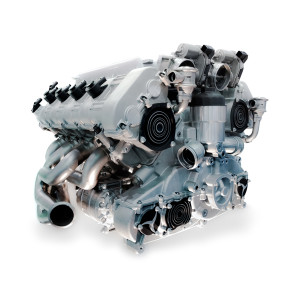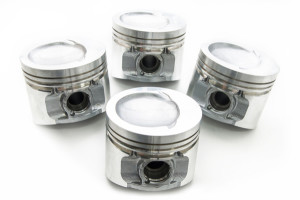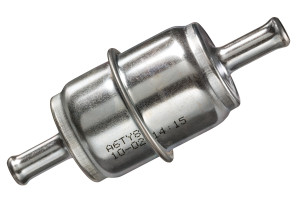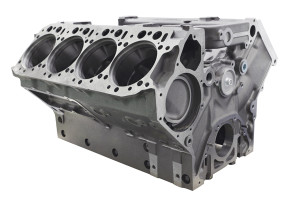By Sergio Zamora, Vertical Marketing Manager Automotive, Videojet Technologies
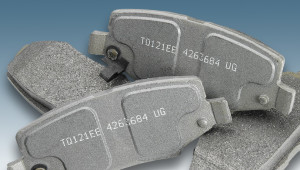 Counterfeiting is not just a problem for consumer electronics, pharmaceutical drugs and fashion labels anymore. Counterfeit goods have become a major issue for the automotive industry, particularly in the aftermarket. Illegal parts including vital internal components, such as oil and air filters, wheels, spark plugs, brake discs and pads, even air bags, are finding its way into cars and trucks. Not subject to the same manufacturing procedures, safety testing and quality standards as genuine original equipment manufacturer (OEM) components, these parts present some very serious safety and economic issues.
Counterfeiting is not just a problem for consumer electronics, pharmaceutical drugs and fashion labels anymore. Counterfeit goods have become a major issue for the automotive industry, particularly in the aftermarket. Illegal parts including vital internal components, such as oil and air filters, wheels, spark plugs, brake discs and pads, even air bags, are finding its way into cars and trucks. Not subject to the same manufacturing procedures, safety testing and quality standards as genuine original equipment manufacturer (OEM) components, these parts present some very serious safety and economic issues.
According to the World Health Organization (WHO), each year an estimated 36,000 fatalities and 1.5 million injuries are the result of defective counterfeit automotive parts. In addition, counterfeit parts take its toll on automotive manufacturers’ bottom lines. The U.S. Department of Commerce estimates that the rising number of counterfeit parts costs the automotive industry approximately $12 billion each year in lost profits globally and more than 200,000 manufacturing jobs. Finally, defective and potentially dangerous parts can have an adverse effect on an automotive manufacturer’s most valuable asset, brand reputation.
Numerous safety and anti-counterfeiting legislation has been enacted throughout the world, aimed at protecting consumers, as well as intellectual property. There are active steps that manufacturers can take to improve the situation. As an added measure, in order to protect consumer safety, traceability standards have been established to help verify genuine OEM parts, cutting down on counterfeit components.
The most prevalent is ISO/TS16949, developed by the International Organization for Standardization (ISO), an internationally recognized group that creates standards accepted throughout 164 countries, including North America and the EU. In conjunction with the International Automotive Task Force (IATF), the standard was developed for the automotive industry, requiring automotive designers and manufacturers to obtain third party-verified quality management certification. This includes a clause specific to traceability, requiring manufacturers to clearly identify and document their products. By demonstrating compliance with ISO/TS16949, manufacturers can win new business in lucrative markets and countries where some suppliers require ISO certification.
Improving Traceability
With an eye on traceability, various technologies exist that OEMs and their component suppliers can utilize to verify that only the highest quality parts go into vehicles. Direct part marking (DPM) technologies can be used to mark original components by printing 1D or 2D barcodes directly onto the parts. DPM is durable, providing permanent identification that lasts as long as the part does and can weather all types of environmental conditions. A wide range of DPM methods can accommodate most materials used to manufacture automotive components including plastic, metal, aluminum, wood, leather and glass. These codes can be used to confirm that genuine parts across the supply chain are being used, reducing the level of counterfeit products and ensuring that only high quality parts are used in automotive manufacturing and part replacement or repair.
DPM technologies include laser marking, continuous inkjet printing (CIJ), dot preening and electrochemical etching. When determining the type of technology needed, it is important to consider the type of material or substrate being marked. Another key factor to consider is the manufacturing line, itself. For example, does the technology work well on a largely automated line?
Laser Marking
Laser marking uses heat rather than ink to apply codes to automotive parts. This method is considered highly flexible and features non-contact marking, ideal for “difficult” surfaces. For example, a CO2 Laser can be used to mark codes on glass and synthetics, while a Solid State Laser is better suited for materials such as aluminum, copper, titanium, iron, steel, magnesium and ceramics. High abrasion resistance of marks applied by laser technology provides improved durability and permanence. Laser marking systems can be automated and require very little maintenance, allowing for faster coding. Methods include ablation, engraving, tempering, bleaching, inner-engraving and fracturing.
Continuous Inkjet Printing
Another non-contact coding technology, Continuous Inkjet Printing (CIJ) can operate on a wide variety of substrates without damaging or compromising the part’s surface. Delivering a stream of ink drops to the print target via a print head, CIJ technology can print on nearly any surface, smooth or irregular, and can apply codes to the side, top, bottom or interior of a component. CIJ printing can be adapted to various surfaces by specifying the right ink and initial investment costs are typically lower than laser marking systems. This makes CIJ a cost-effective solution for low-to-medium volume producers. However, OEMs should keep in mind that CIJ technology requires the product marked to be completely clean to achieve a clear code, possibly adding process steps, time and resources to production. In addition, most inkjet codes can be removed using certain solvents.
Dot Preening
Dot preening technology uses an indenting pin to create an indentation for each dot in the code. The contrast necessary for accurate verification comes from light that reflects differently on the indentations and the surface of the product. Applicable to aluminum, copper, iron, and steel, dot preening requires low initial investment and provides permanent marks. Dot preening ensures high abrasion resistance and allows for greater mobility on the production line. However, this technology is not suited for components made using thinner or more fragile materials.
Electrochemical Etching
Electrochemical etching removes layers of material through electrolysis, providing high quality marks on select substrates including aluminum, copper, titanium, iron, steel and magnesium. The technology is easy-to-use and inexpensive to implement. The process offers high-resolution black etch marks and can be used on both soft and fully-hardened metals. However, electrochemical etching has limited flexibility, as it can only be used on metallic conductive materials and pre-formed molded are needed for each code.
The fact of the matter is counterfeit parts are big business, finding its way into the automotive supply chain it can create an unsafe environment for consumers, cost the industry billions in lost profits, and tarnish hard-earned automotive brand reputations. While counterfeiting is illegal and governments are working together to stem the flow of fake products being traded throughout the world, there are existing manufacturing processes that the automotive industry can implement, such as DPM technology. This solution can work to verify genuine OEM parts and reduce the number of counterfeit parts installed in vehicles. Stringent international supply chain standards, such as ISO/TS16949, require component traceability throughout the supply chain. There are various DPM methods that can place 1D or 2D barcodes on a wide range of materials and fit into any existing production line, including laser marking, CJI, dot preening and electrochemical etching. These codes serve to confirm the authenticity of quality parts at any stage of the automotive supply chain. In compliance with safety and quality standards, these marking technologies are an excellent way for the automotive industry to protect the general public, their profits and the reputation of their brand.
